| ☰ Menu | Auroral measurements during the eclipse |
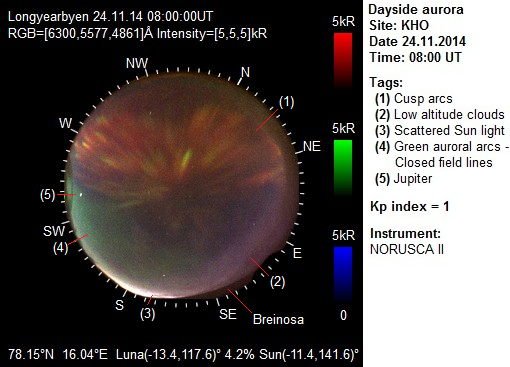
1. Motivation
During the total eclipse the sky intensity is expected to be close to full moon night conditions.
From KHO the event will be blocked (partially) by the nearby mountain Breinosa.
This gives us an excellent opportunity to see if we can detect aurora during the eclipse.
The key question becomes:
When the Sun is turned OFF, what effects will be seen in the upper atmosphere / ionosphere?
2. Dayside aurora
Figure 2 shows a sky map as seen from the Kjell Henriksen Observatory (KHO). The map shows the eclipse, known star
asterisms and planet positions. The green belt is the estimated position of the auroral oval in our field of view.
The auroral activity level is in this case quiet to normal condition (Kp=2) [1].

The eclipse occurs only ~1 hour and 15 minutes after magnetic noon (~08:55 UT) at KHO. We therefore expect red colored dayside cusp aurora or post noon auroral arcs to be visible within our field of view. See Fig. 1.
3. Ionospheric Impacts
Although Svalbard lies in the path of totality at ground level it is a different story at higher altitudes. Figures 3 - 6 (courtesy of S. Bell of HM Nautical Almanac office, UK) show where the path of totality occurs at different altitudes (0, 50, 100 and 250km) In the F-region (where we are hoping to image dayside auroras) the ionosphere will be sunlit. The conditions will thus be similar to that of Polar Night at the end of December.

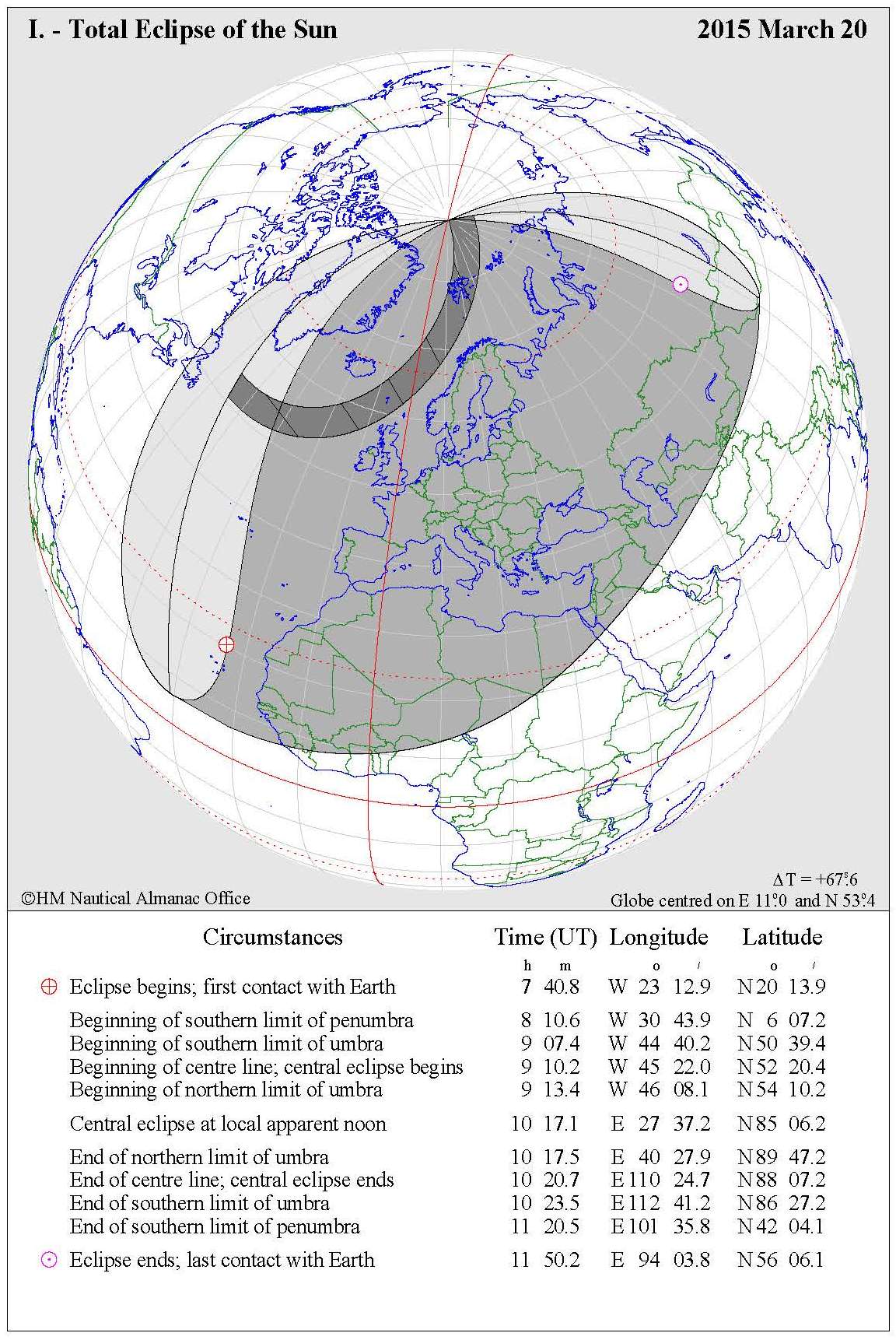
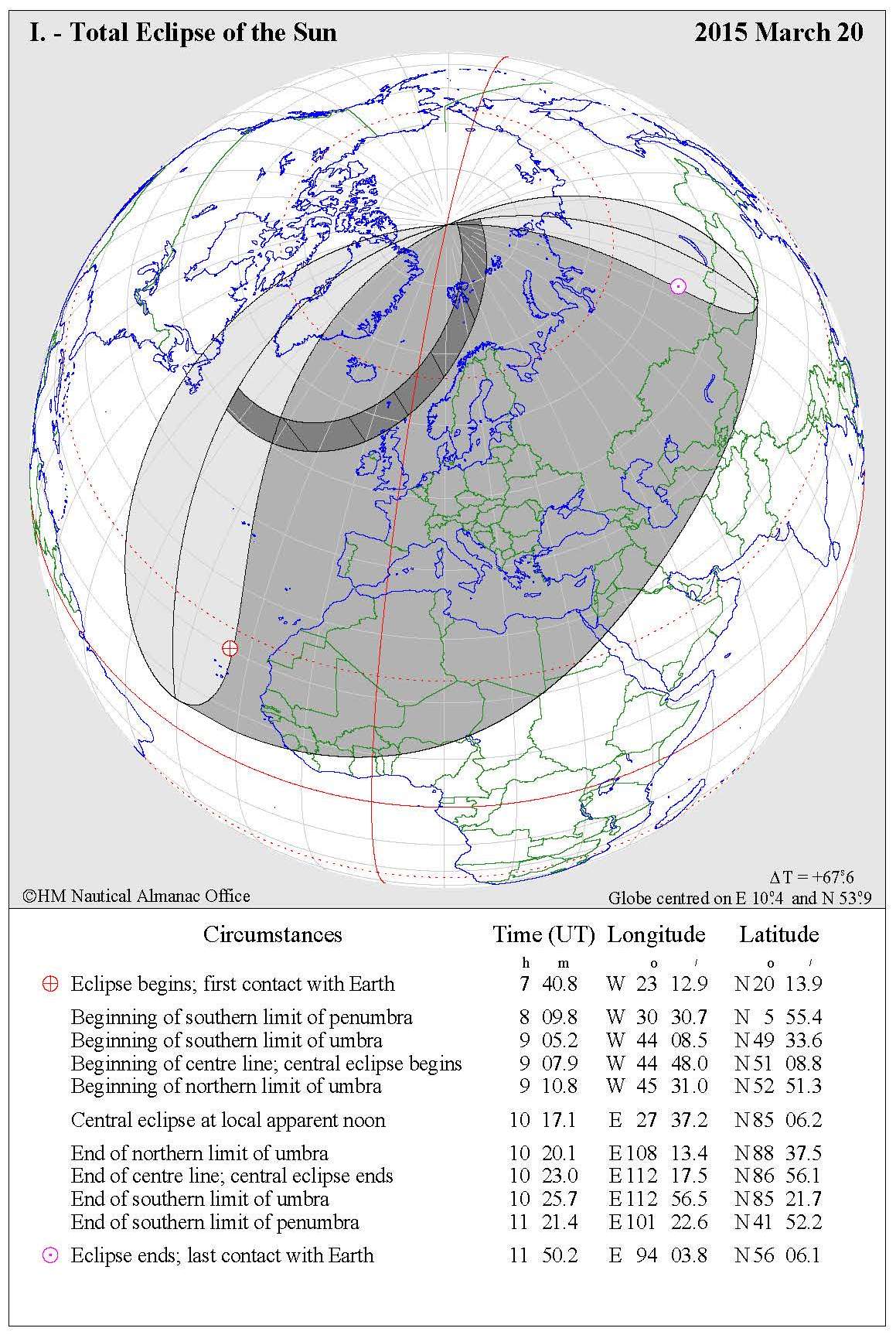
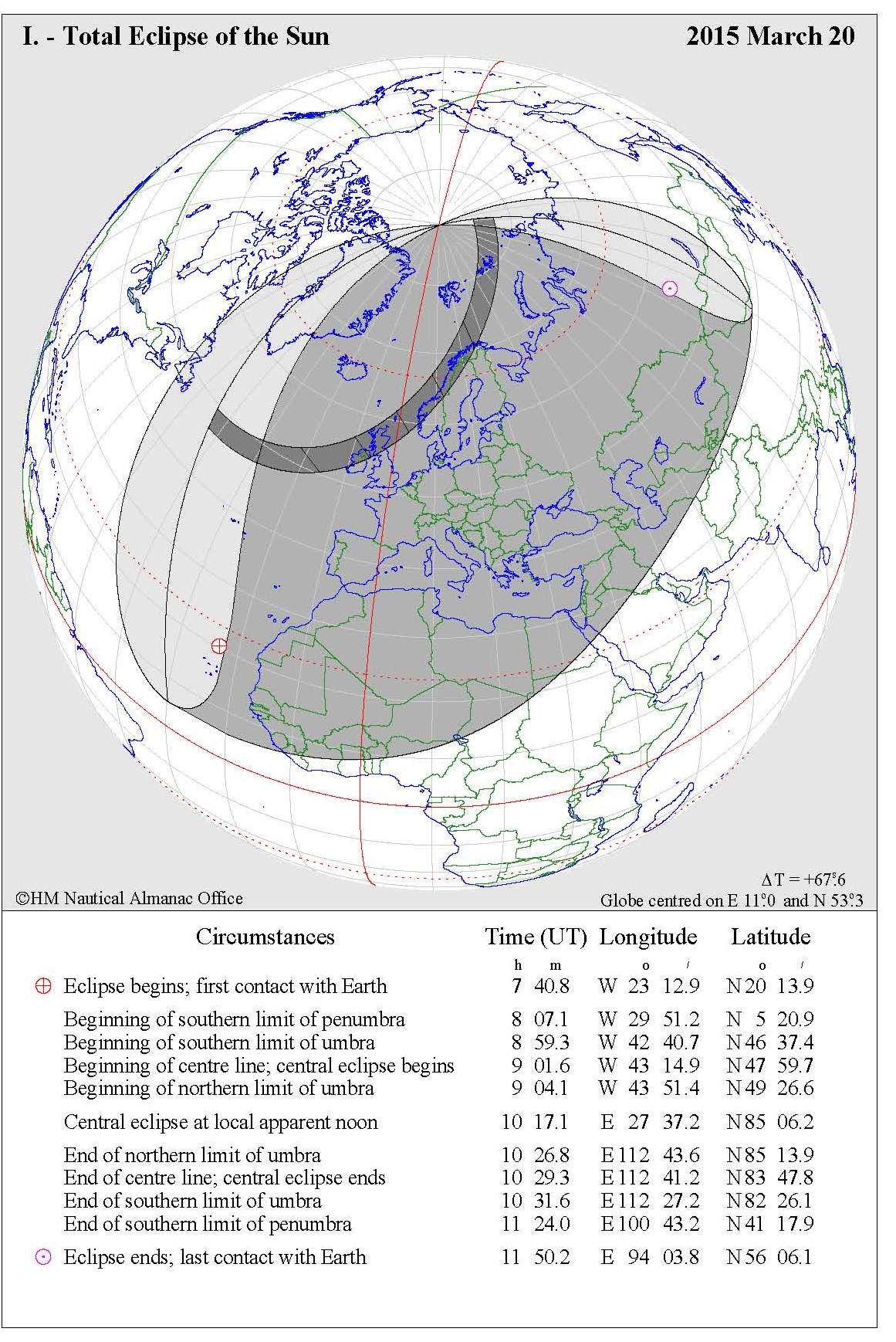
4. Optical instruments
Full moon conditions are too bright for our intensified camera systems. As a consequence, we aim to operate bare CCD cameras that are not damaged by over illuminated exposures, especially, during the partial part of the event.
The followings camera systems are candidates to be used:
(1) DSLR All-sky cameras
(2) All-sky Airglow imager
(3) All-sky video camera
(4) ...
5. Radars
The EISCAT Radars in both Longyearbyen and Tromsø will be taking realtime measurements of the electron densities, electron and ion temperatures and velocities in the ionosphere during the eclipse. The experiments will observe how fast the atmosphere responds to the lack of solar ionization.
6. Effects on GPS systems
During the eclipse we will track signals from navigation satellites (GPS, GLONASS and GALILEO) that have signal paths intersecting the shadow of the total eclipse, see Figure 7. The receivers are located at four sites; Ny-Ålesund, Longyearbyen, Hopen and Bjørnøya. They measure signal phase and amplitude and derive the plasma density in the ionosphere (Total Electron Content; TEC). Data is available in real-time here.
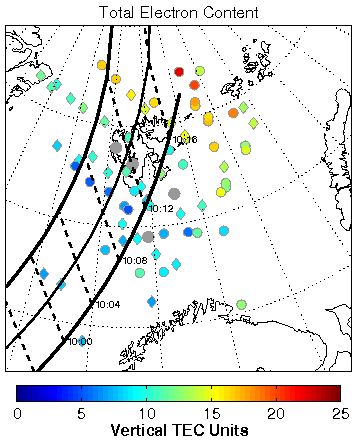
References
[1] KHO Auroral forecast service.